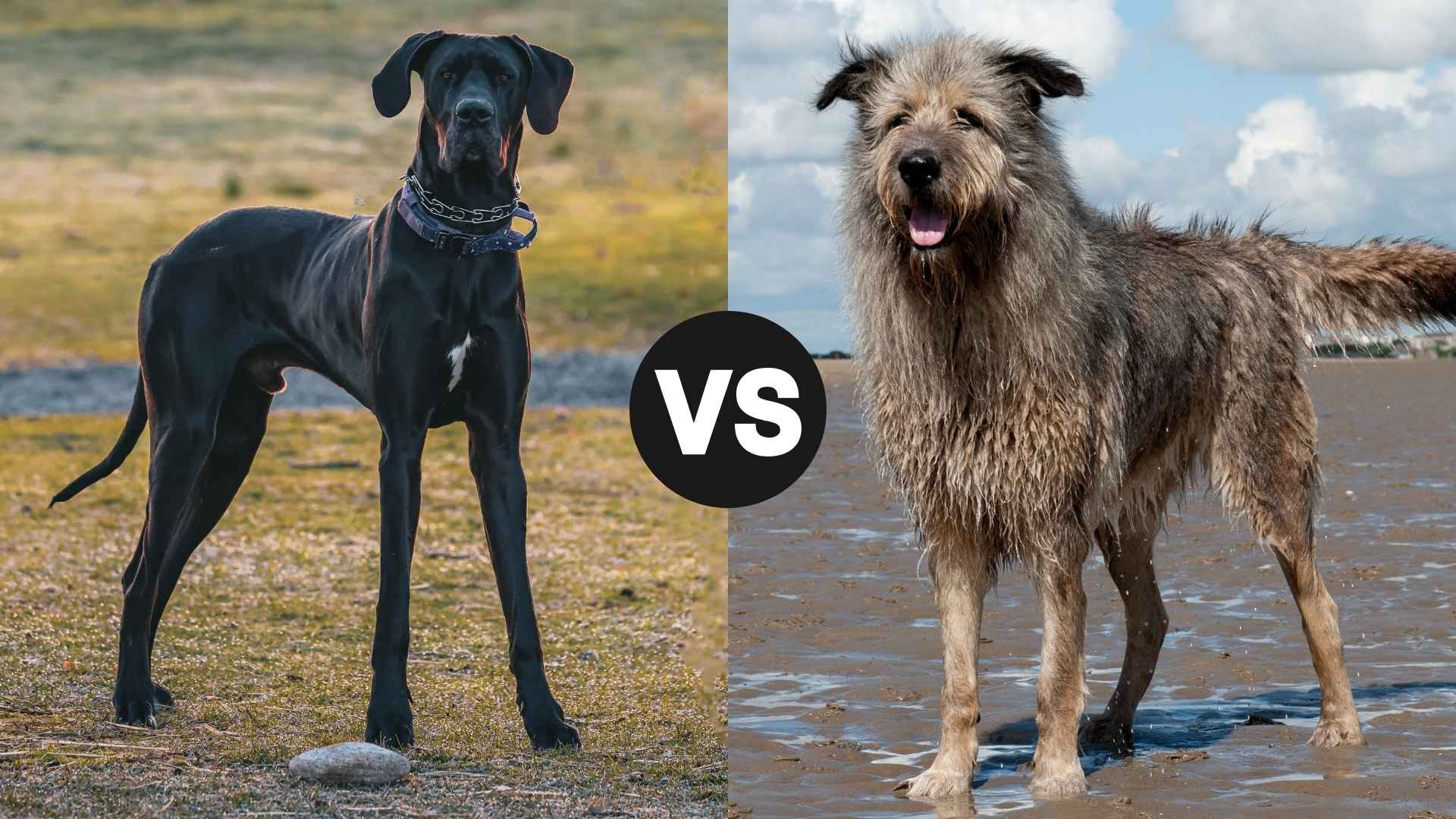When it comes to dogs that make a jaw-dropping first impression, few breeds stand as tall, literally and figuratively, as the Great Dane and the Irish Wolfhound. These large dog breeds aren’t just enormous; they’re also gentle, loving, and surprisingly adaptable to family life.
But if you’re trying to decide between them, you’re in for quite the challenge. While the Great Dane is known as the “Apollo of Dogs,” elegant and noble in every stride, the Irish Wolfhound brings a rugged, mythical charm straight out of an old Irish legend.
Though similar in size, their personalities, care needs, and even their heart-melting quirks are delightfully different. Which one is better with kids? Who sheds less? Which breed thrives in an apartment, and which needs room to roam?
Whether you’re a dog lover dreaming of a giant canine companion or a family looking for a loyal protector, this comparison will guide you to your perfect match.
Let’s step into the paws of these giants and explore what sets them apart—and why both are incredible in their own right.
Great Dane vs. Irish Wolfhound
Breed Origins and History
The Great Dane:
Despite the name “Great Dane,” this towering breed has zero connection to Denmark. (Yeah, we’re confused too.) In reality, the Great Dane was developed in Germany, where it was originally called the Deutsche Dogge, which honestly sounds like a rock band. These dogs were bred for a noble purpose: boar hunting.
As wild boar hunting fell out of fashion (as most hobbies involving tusks do), the Great Dane traded in its armor for a collar and became a canine aristocrat, lounging in European palaces with all the grace of a chandelier that occasionally drooled. Today, Great Danes are known as “gentle giants”—big enough to reach your countertop snacks but polite enough to ask permission first (most of the time).
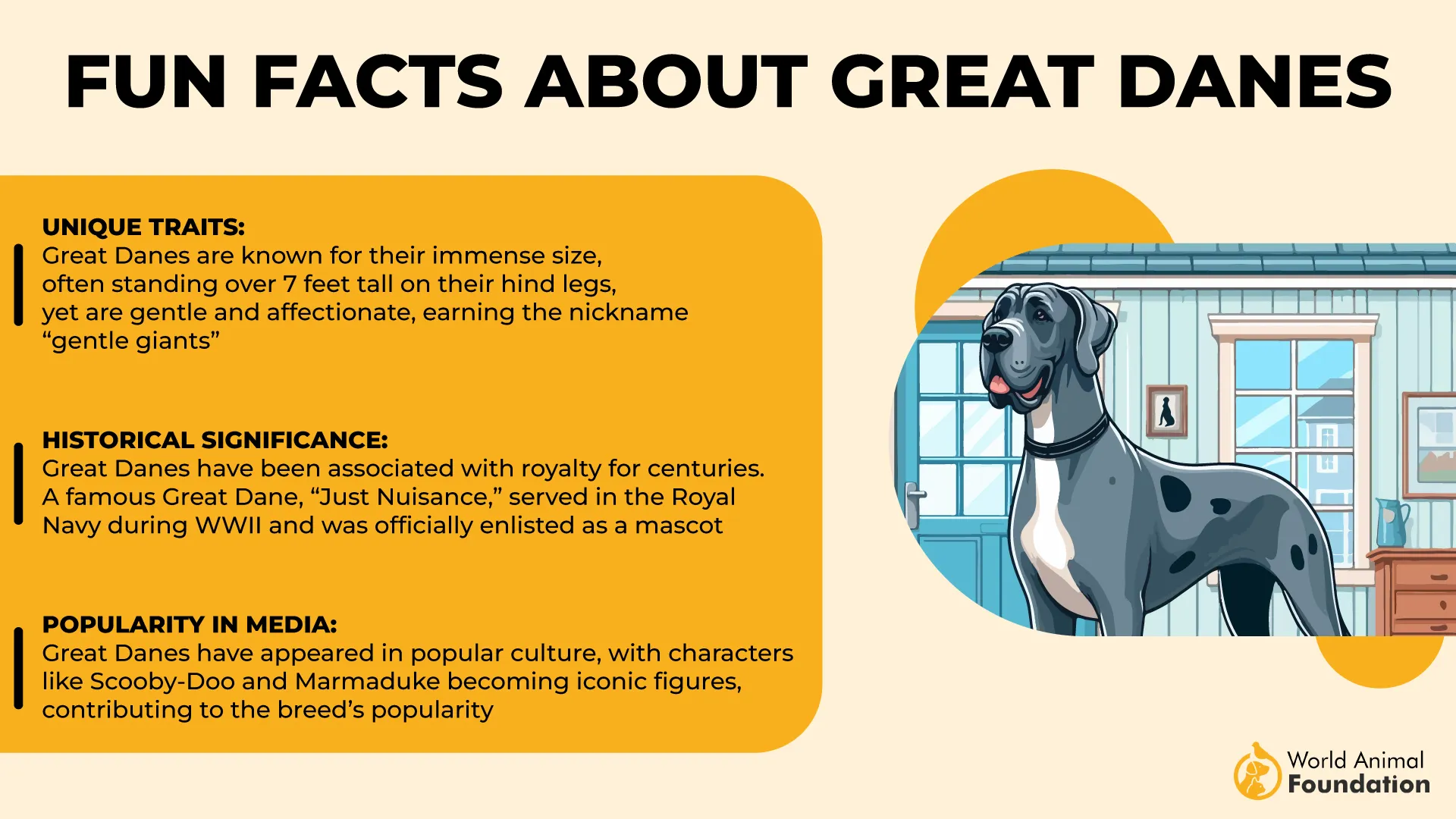
Irish Wolfhound:
Now, cross the sea to the misty hills of Ireland, where the Irish Wolfhound was winning hearts (and battles) long before Netflix history dramas made it cool. This shaggy, noble hound dates back to ancient times, with mentions in Irish literature from as early as 391 A.D.
These dogs weren’t just pets—they were gifts for kings, warriors in battle, and symbols of status. Think of them as the ancient world’s version of a luxury SUV: powerful, impressive, and capable of taking down wolves and enemies alike.
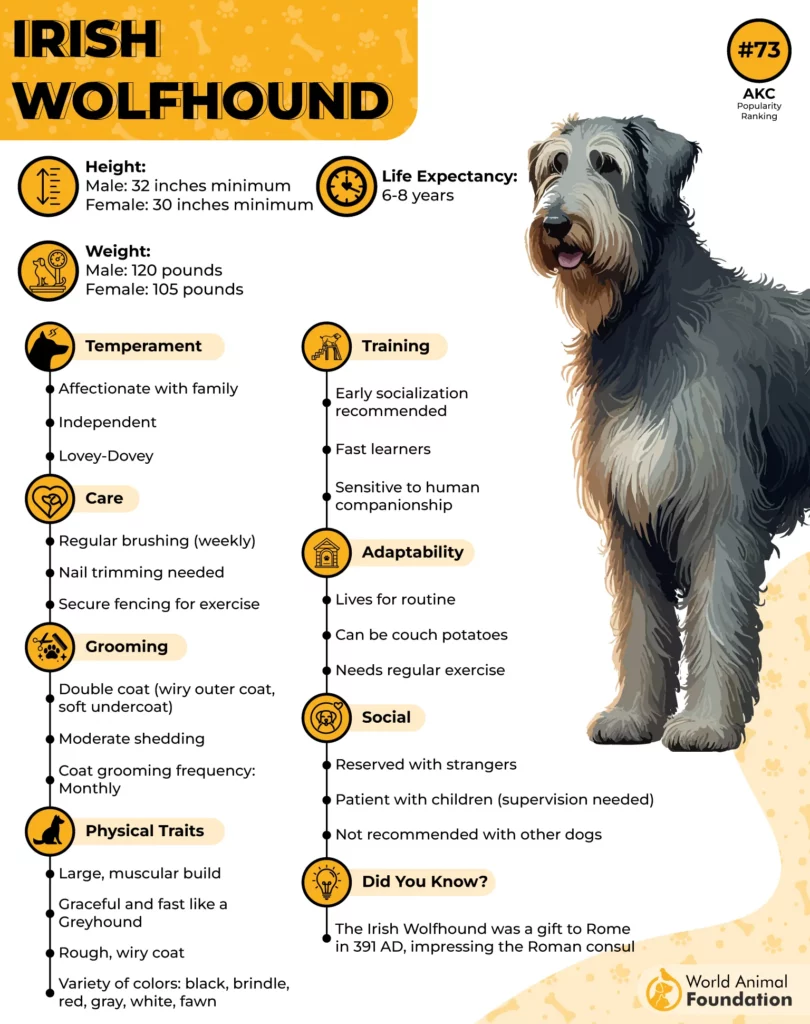
As their name suggests, Irish Wolfhounds were bred to hunt wolves, which were a serious problem in Ireland until, well… the Wolfhounds showed up. Today, Irish Wolfhounds prefer quiet dignity, loyalty, and the ability to take up an entire couch by themselves. They don’t bark often—probably because they don’t need to. When you’re the size of a mythical creature, you let your presence do the talking.
Distinctive Physical Features
The Great Dane:
Picture this: a dog that walks into the room and everyone turns their head. That’s the Great Dane—tall, sleek, and statuesque. If there were a runway for canines, they’d be the Naomi Campbell of dogs. PetMD notes that Zeus, the Great Dane who held the world record for height, measured 41 inches tall at the shoulder and towered over 7 feet when standing on his hind legs.
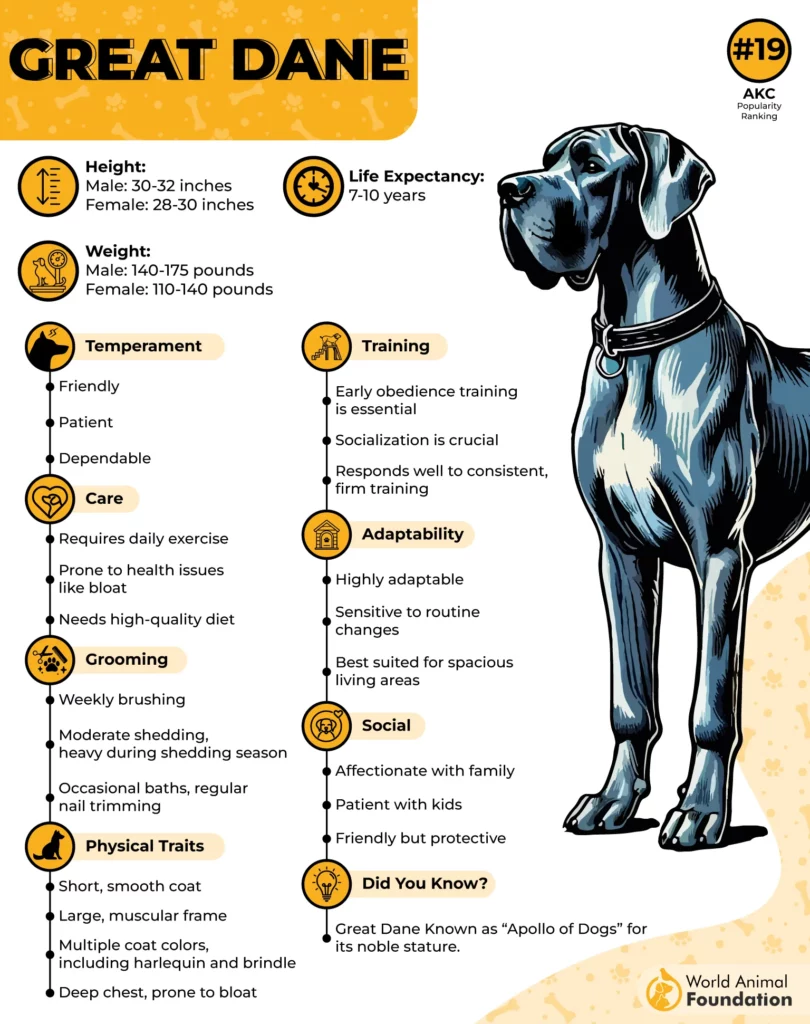
Height: 28–34 inches at the shoulder (and that’s before they stretch!)
Weight: 110–175 pounds
Body: Muscular but elegant, with long legs, a deep chest, and a tight waistline (yes, we’re still talking about a dog)
Head: Rectangular and regal, with a chiseled look that says, “I drink Evian.”
Ears: Naturally floppy, but often cropped (though thankfully, more people are going au naturel these days)
Coat: Short, smooth, and low-maintenance—just like their drama tolerance
Colors: Harlequin, brindle, black, blue, fawn, and mantle—the whole fashion catalog
They’re refined giants who look like they were sculpted by Michelangelo during a growth spurt.
Irish Wolfhound:
Now, if Great Danes are the runway models, Irish Wolfhounds are the rugged warriors with hearts of gold. Think “Game of Thrones,” but with fewer beheadings and more belly rubs.
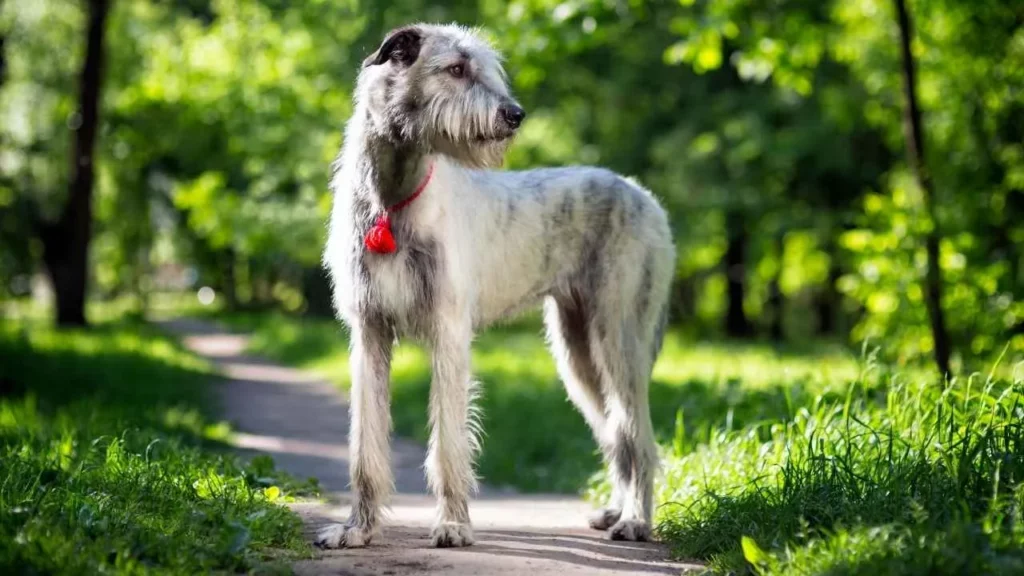
Height: 30–35 inches and up—sometimes taller than a Great Dane
Weight: 115–180 pounds (yes, your sofa is now their throne)
Body: Strong, lanky, and slightly arched at the loin—built like a graceful warrior with a windswept mane
Head: Long and noble with a hint of scruff that says, “I drink Guinness.”
Ears: Small and rose-shaped, adding to that medieval-chic aesthetic
Coat: Rough and wiry, designed for Irish weather and wolf-chasing
Colors: Gray, brindle, red, black, white, and fawn
They’ve got that “wise old soul” vibe, with a beard to match—and yes, they pull it off.
Temperament and Personality Traits
If dog breeds had personality quizzes, both the Great Dane and the Irish Wolfhound would score “gentle giant with a secret talent for sofa-hogging.” But while they share a love for lounging and loyalty, their temperaments have distinct flavors—like comparing a dashing movie star to a wise old bard.
The Great Dane:
Great Danes are often referred to as the “Apollo of Dogs”—tall, beautiful, and just a little dramatic. Despite their size, they think they’re lap dogs (and honestly, who’s going to argue with them?).

Personality Snapshot:
Affectionate & Loyal: A Dane will follow you from room to room like a 150-pound shadow.
Gentle with Kids: Surprisingly careful and sweet around children—the world’s biggest babysitter.
Protective but Not Aggressive: They may bark at strangers, but it’s more “Hey, who are you?” than “Get off my lawn!”
Goofy and Playful: Think oversized puppy energy in short bursts, followed by long, glorious naps.
Sensitive Souls: They don’t respond well to harsh tones—positive reinforcement works best.
Fun Fact: Great Danes are so charming that they often forget their size. Expect tail-whaps, face-level kisses, and the occasional “Did I just knock over that lamp?” moment.
Irish Wolfhound:
Irish Wolfhounds might look like rugged warriors, but they’re stoic old souls in fur coats. Graceful, quiet, and deeply loyal, they don’t bark much—they speak with their presence.
Personality Snapshot:
Calm & Dignified: No frantic tail-chasing here—they’d rather watch clouds roll by with you.
Sweet-Natured & Gentle: Their gentle nature makes them incredibly patient, even with rowdy kids or other pets. Purina says, however, puppies and young adult dogs are often lively and full of energy, which might make them less suitable for families with small children.
Independent Thinkers: Less eager to please than Danes, but still deeply bonded to their humans.
Quiet Guardians: They’ll defend if needed, but most of the time they’re peaceful giants.
Emotionally In-Tune: Sensitive to stress, they do best in quiet homes with soft energy.
Fun Fact: Wolfhounds are often called “living legends” because of their noble history and wise demeanor. If Gandalf were a dog, he’d be an Irish Wolfhound.
Exercise and Activity Requirements
The Great Dane:
Great Danes are often described as “the world’s tallest lapdogs”, and honestly, it shows in their energy levels. They’re athletic enough to look like they run marathons, but deep down, they’re all about that Netflix-and-nap lifestyle, with occasional zoomies thrown in just to keep you on your toes.
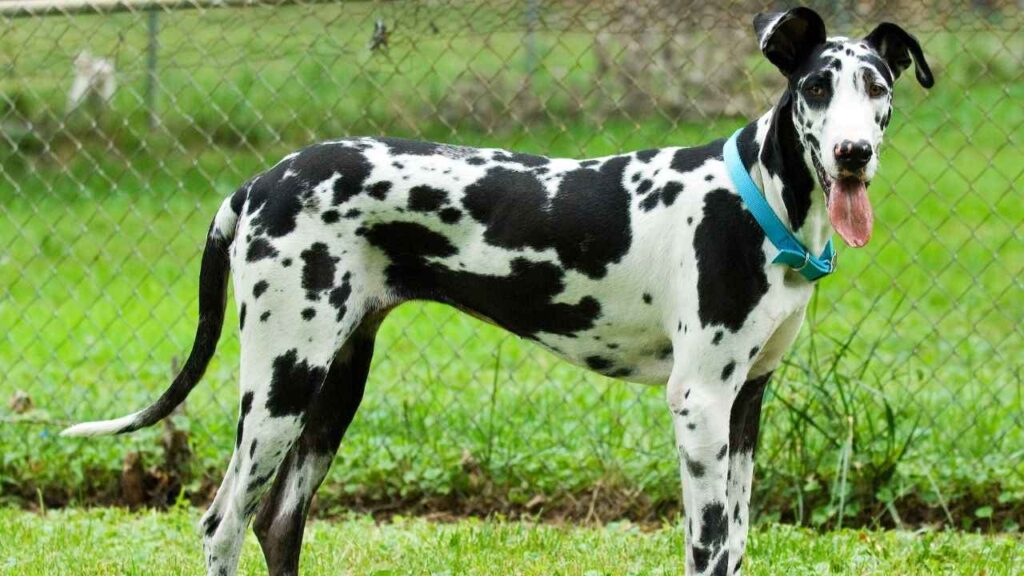
Daily Exercise Needs:
30 to 60 minutes a day of moderate activity.
They enjoy brisk walks, short jogs (after 18–24 months when their joints are mature), and backyard play.
Be cautious with puppies! Too much running or roughhousing early on can mess with those big, growing joints.
Favorite Activities:
Leisurely walks around the block (bonus points if people compliment them)
Light games of fetch
Lounging after 10 minutes of pretending to be energetic
Caution:
Because of their size, they’re prone to joint issues and bloat, so avoid intense activities right after meals and don’t overdo it—they’ll be happy to join you for a stroll, not a marathon.
Irish Wolfhound:
Now let’s talk about the Irish Wolfhound—a breed that was once a fearless wolf hunter, but has since traded in the battlefield for backyard sunbathing. Despite their past as warriors, Wolfhounds are surprisingly low-key when it comes to regular exercise.
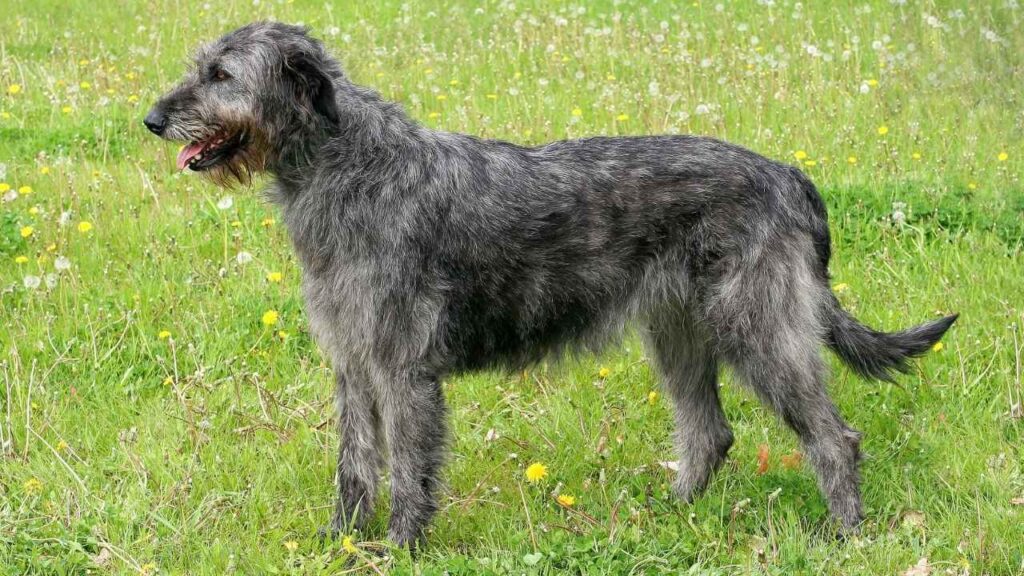
Daily Exercise Needs:
40 to 60 minutes a day, but nothing too wild.
They thrive on daily walks and free-roaming in a fenced yard.
Like Great Danes, they grow fast and large, so avoid intense activity when they’re young to protect their developing joints.
Favorite Activities:
Casual, scenic walks (preferably with squirrels to daydream about)
Light jogs or play in a secure area
As per WebMD, they also thrive in dog sports such as agility or tracking.
Roaming your living room like an ancient nobleman
Caution:
Wolfhounds can appear lazy, but a lack of exercise can lead to muscle weakness and joint stiffness, so daily movement is still essential, even if it’s more “stately stroll” than a “high-speed chase.”
Health Considerations and General Care
When it comes to health and general care, both the Great Dane and the Irish Wolfhound come with extra-large hearts and extra-large responsibilities. These gentle giants require thoughtful care because when a dog is taller than your dining table, things like joint support, diet, and vet visits become more important than ever.
The Great Dane:
Lifespan: 7–10 years
Great Danes may seem like superheroes, but even Superman had kryptonite. While they often age gracefully, they’re susceptible to a few common (and sometimes serious) health conditions.
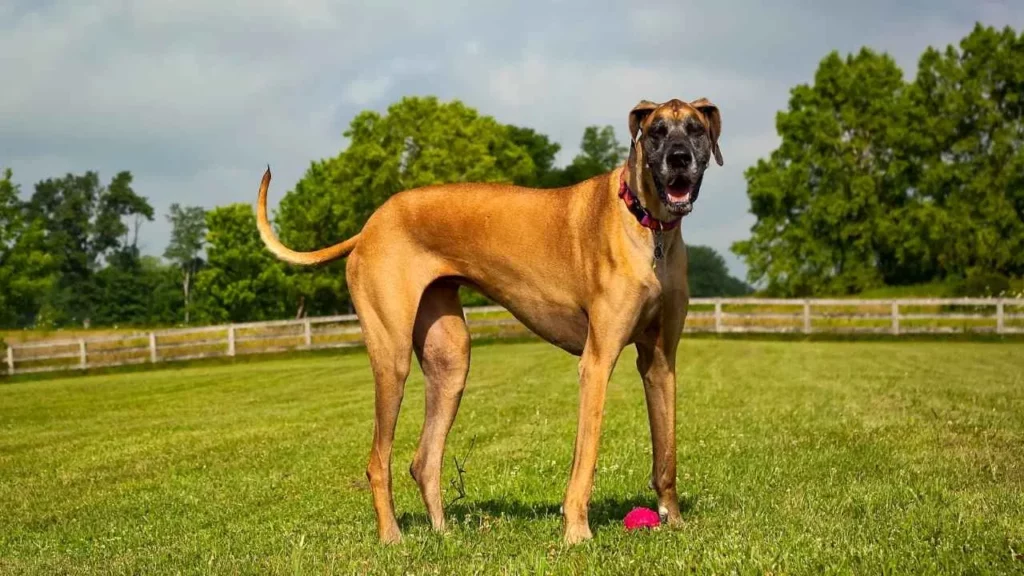
Common Health Concerns:
Bloat (Gastric Dilatation-Volvulus)
Hip Dysplasia
Dilated Cardiomyopathy (DCM)
Hypothyroidism
Wobbler Syndrome
General Care:
✅ Weekly brushing (they’re low-maintenance in the grooming department)
✅ Trim nails and keep ears clean
✅ Provide joint supplements and orthopedic bedding
✅ Feed 2–3 small meals per day—they’re prone to bloat
✅ Schedule regular vet checkups—don’t wait for signs of discomfort
Irish Wolfhound:
Lifespan: 6–8 years
Irish Wolfhounds are regal, wise, and incredibly calm—but their bodies can be more delicate than their wolf-hunting ancestors would suggest.
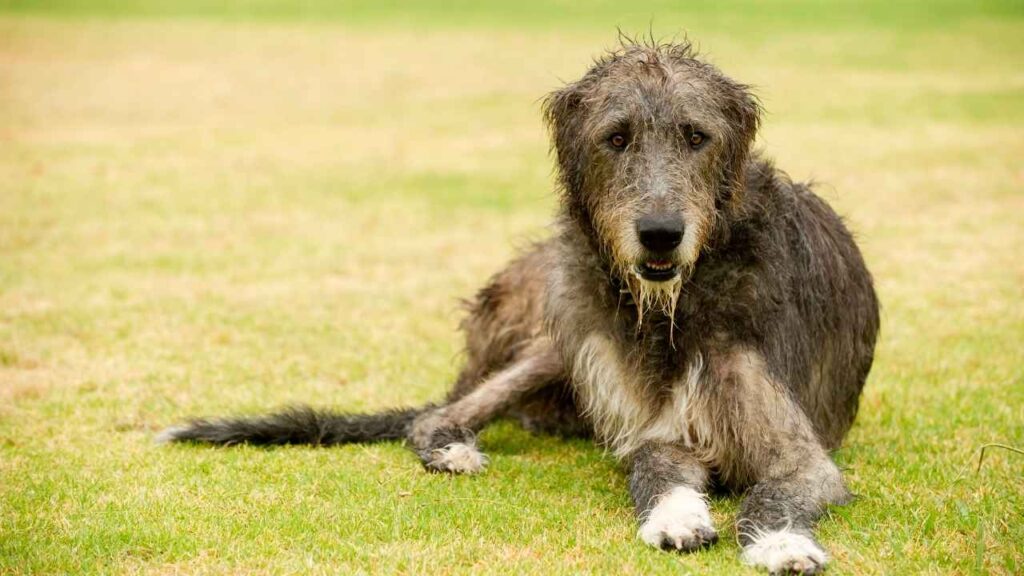
Common Health Concerns:
Dilated Cardiomyopathy (DCM)
Osteosarcoma (Bone Cancer)
Bloat
Hip Dysplasia
Progressive Retinal Atrophy (PRA)
General Care:
✅ Weekly brushing to keep their wiry coat tangle-free
✅ Occasional hand-stripping to maintain coat texture
✅ Feed smaller, frequent meals to reduce bloat risk
✅ Give them gentle daily exercise, ideally in a safe, enclosed space
✅ Regular vet visits are a must—early detection is key
Conclusion
When comparing the Irish Wolfhound vs the Great Dane, both are two gentle giants and wonderful companions among large dogs. There are a few key differences, like Great Danes tend to have a short and smooth coat, while Irish Wolfhounds have a coarse outer coat and double coat, requiring more brushing to remove loose hair.
Though both breeds shed excessively, their minimal grooming needs make them easier to manage than many large breed dogs. These two breeds benefit from early socialization, crate training, and off-leash exercise. Great Dane owners may find their dogs a bit lazy, true couch potatoes, while Irish Wolfhounds crave lots of indoor and outdoor space and mental stimulation to keep life interesting.
Particularly, Irish Wolfhounds can be sensitive and suit experienced dog owners best. Both big dogs are great with older children, but should be checked regularly for the most common health problems. While Irish Wolfhounds tend to be more independent, both breeds can become safe and obedient companions with training from an early age. Choosing between these two huge hounds depends on lifestyle, especially if small animals or other dogs are involved, and your ability to handle these majestic breeds.


